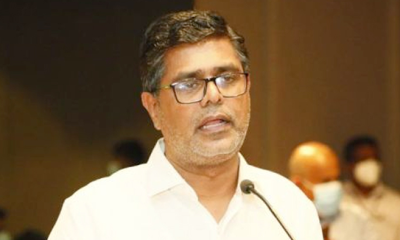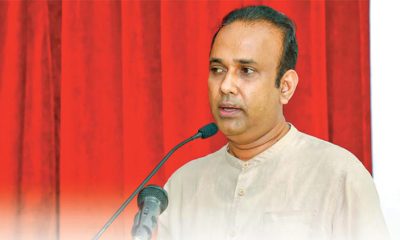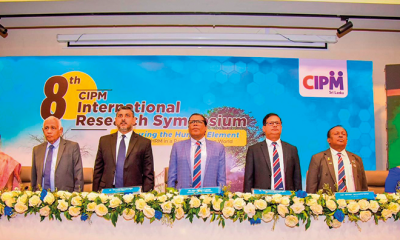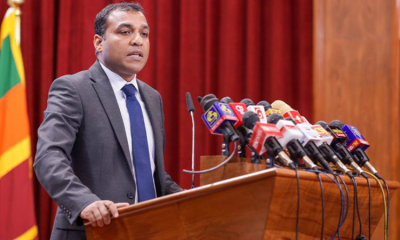Features
As gas cylinders explode, who else but the Government to blame?
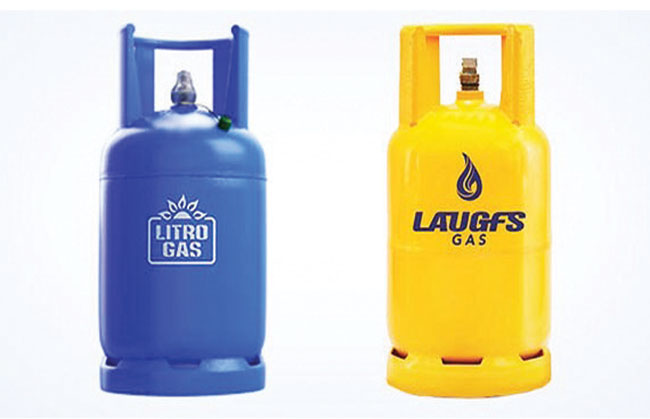
by Rajan Philips
Who would have thought Litro Gas and Laugfs Gas (not quite the Laughing Gas with Lankan typos), will light up Sri Lankan politics for all the wrong reasons? President Rajapaksa should fire his current clairvoyants and get new diviners who can at least smell leaking gas even if they cannot find missing water. But monsoons are making sure that no one is missing any water, which will become dear when the climate change cycle turns to the other extreme of drought, come next year.
For now, it is all about cooking gas leaks and kitchen explosions. And the news report (Daily Mirror, December 2) that “Experts point out measures to be taken to avert gas explosions,” raises the obvious question as to why these measures could not have been announced weeks earlier, either by the government or the two suppliers, or both. And what is the point in communicating to users of LPG cylinders for domestic cooking, the applicable standards for accessories: for Regulators, SLS – 1180; and for hoses, SLS – 1172.
Why could not have anyone in the government or from the suppliers hollered from their podiums what the Experts Committee is now saying, that “if people suspect the domestic LP gas cylinder(s), it needs to be immediately placed outside and consumers need to contact their sales agents or reach relevant officials.” Or that “the recommended usage period for a regulator is five years and for hoses is two years.” But no indication, however, of the age of the accessories in the recent instances of kitchen explosions, or as a matter of general use in the country.
Do either of the suppliers know any of this? Do they make it a point to insistently inform their customers of necessary safety measures – including the usage period not only for the accessories, but also for the cylinders. Is this information printed and pasted on the cylinders, and given to customers to be posted on kitchen doors and walls? Hopefully, providing this information will now become a standard practice for the suppliers and will be enforced by local civilian authorities. Not the army, or the police, please.
Better Safe than Sorry
Still there is no explanation for the spate of explosions within a short period. According to a reported statement by State Minister (Co-operative Services, Marketing Development, and Consumer Protection) Lasantha Alagiyawanna, 213 gas explosions have been reported between January 2015 and 31 October 2021. 131 of them, more than half, have been this year from 1 January to 1 December. Last week there were reports of eleven incidents within a 24 hour period. While domestic gas explosions are not uncommon, the frequency of incidents this year, and in November alone, required much quicker and more comprehensive responses by the government and the suppliers than what has been on offer so far.
The use of LPG (Liquified Petroleum Gas) gas in portable cylinders for cooking, is quite common in several countries. They are also a hazardous appurtenance prone to accidents if not handled with due care. For this reason, in many western countries it is illegal to use gas cylinders inside a house. They are only permitted to be used for outdoor – barbeque (BBQ) – cooking. Indoor cooking appliances are either electrical or based on natural gas supplied through pipeline infrastructure.
In other countries, big and small, where electricity costs are prohibitive and there is no natural gas and pipe infrastructure for supply, the gas cylinders have provided a convenient alternative to traditional firewood and biomass cooking. LPG gas cylinders have become ubiquitous in upscale kitchens as well as shanty dwellings – from Brazil to China and hundreds of countries in between.
Although they are both crude oil products, LPG and natural gas are different in composition, heat energy content and density. LPG is either propane or butane, or a mix of both. Natural gas is primarily methane. Natural gas is also lighter than air and more safely dissipates when leaked, unlike LPG which is heavier and fills up in lower, confined spaces. One advantage LPG has over natural gas is in storage and portability. LPG can be stored and moved in tanks or cylinders. Natural gas requires special cryogenic tanks for storage and pipeline for consumers.
In a recent scientific journal article on domestic gas explosions in India, its academic authors identify Liquified Petroleum Gas (LPG) as a cleaner source of cooking fuel. The use of firewood and biomass for cooking by hundreds of millions of households has been a major source of pollution in India. The increasing use of LPG gas cylinders is seen as a welcome change. Registered LPG users in India have more than doubled from 106 million in 2008/09 to 263 million in 2017/18.
Similar to the practice in Sri Lanka and elsewhere, the domestic LPG supply in India is provided in 14.2 kg and 5.0 kg cylinders. According to the article, the gas supply in India is given a faint but foul smell by adding Mercaptan (foul-smelling Methanethiol) to help its detection when leaked. In addition to settling down, the heavier LPG also “condenses the water vapor in it to form a whitish fog,” making it easy to identify. While there have been cases of LPG explosions in Indian households, the journal article reviews the case of a rather horrendous blast when two women were trying to refill in their kitchen, a 5 kg cylinder with gas from a 14.2 kg cylinder, while cooking was going on. Both died on the spot and their burnt remains were ghastly.
Hopefully, no one in Sri Lanka will attempt refilling cylinders (among neighbours), or tamper with gas supply accessories when the cooking fire is on. There are also basic safety tips while using domestic LPG gas cylinders: keep all accessories and knobs out of reach for children; and shut the cylinder valve off before turning the burner off, so as to burn of all the gas released from the cylinder. What might be more difficult to achieve in many households is to ensure that the kitchen or cooking areas are well ventilated and facilitate through-air flow.
Safety education is important and should pervade all levels of communication – from schools, to media, and advertising. Unfortunately, Sri Lanka like so many countries where the use of LPG gas cylinders is widespread, does not have functioning safety and fire/emergency agencies at the local level. In such absence, it is fair to expect the suppliers of LPG gas to take the lead role in ensuring safety with government support. I am not sure if Mercaptan is added to the gas supply in Sri Lanka as it is done in India to give it a foul smell for detecting leaks. If not, it would be worthy of consideration.
No Regulators, Only Rumours
The most rumoured allegation is that there has been a change in the proportions of Propane and Butane in recent LPG supplies to an even 50-50 split from the regular 70 (butane) to 30 (propane) ratio. And that is the reason for the recent explosions. Both Litro Gas and Laugfs Gas have vehemently denied this and have also contended that it would be uneconomical for them to increase the proportion of propane which costs more than butane. State Minister Lasantha Alagiyawanna has also confirmed this. The Government Analyst and the Consumer Affairs Authority would also appear to be in disagreement with the alleged change in the proportions of the two gases. The Experts’ Committee has also made no reference to it in its first public statement from as reported in the media. Whether anything different will come later on, we know not.
What is mystifying is why this allegation (about changing the gas mix) cannot be put to rest promptly and authoritatively by the government. Or, of course, if the allegation is correct it should be confirmed promptly and addressed without delay. As if it does not have enough worries on its plate, the Ceylon Petroleum Corporation is reported to have done tests on the gas composition and its report, which has not been publicized, apparently “confirms that if the gas composition is 50% propane and 50% butane, there is a higher risk of gas leaks.” This is academic, the real question is about the actual proportion of gases in the two samples that CPC is reported to have tested.
While the CPC’s findings have reportedly been sent to the University of Moratuwa for review, the gas suppliers are rejecting CPC’s credentials to make this determination. Litro Gas has even said that CPC has a conflict of interest as a potential competitor planning to enter the LPG cylinder market on its own. That will be some competition between two ‘State enterprises’ – if you will pardon the oxymoron. Still after one year and 131 explosions, the country is nowhere closer to a plausible explanation. Everyone is going round in circles, if not circus.
There is also great deal of confusion about the applicable standards and regulations for the LPG gas industry. According to State Minister Alagiyawanna (who seems to be carrying on his shoulders all the political cylinders on the LPG matter), Sri Lanka has no regulations to deal with the industry and there are no designated agencies to supervise them. “We have no legal laboratory in Sri Lanka to check the quality of domestic gas,” the Minister has specifically said. The Minister’s worry is supported by Chairman Janaka Ratnayake of the Public Utilities Commission of Sri Lanka (PUCSL). According to him, a standard for the Liquid Petroleum (LP) gas has already been formulated by the Commission, but “the PUCSL does not have the legal powers to enforce the standard.” Who does, who will, and when?
Until then, the country will be put through multiple rumour mills and conspiracy machines. A convoluted theory seems to be that the same masterminds behind the Easter bombings are at work again – for the benefit of whom, God only knows. But this is a dangerous game, more dangerous than the fallopian fantasy, or the Trincomalee corridor that Americans were supposed to create through the now aborted Millennium Compact. The ever creative SJB MP Harin Fernando, is seeing “foul play between Litro and the government.” According to Mr. Fernando, the spate of explosions is all a ploy to make the gas industry unpopular and use it as justification to sell off Litro to financially benefit the government – which is fast running out of badly needed foreign currencies and is printing away valueless local monies.
Lesser mortals like yours truly are not good at conspiracies and these theories are a tad difficult for us to understand. What is not difficult to understand is the government’s lack of quick response to these sudden eruptions. The government has many other serious matters to worry about, and we have become all too familiar with its inability to respond to them quickly and substantively. As a parting shot, I will pose this question unrelated to today’s topic, but a topic that I was planning to write on this week. With everything going wrong and nothing going right, why on earth is the government insisting on foisting on the country a new constitution? And why is the opposition waiting to react to a draft after it is tabled, instead of rejecting it out of hand before it is brought to parliament. The country deserves to be free not only of LPG explosions, but also from another bout of constitutional inflammation.
Features
The heart-friendly health minister

by Dr Gotabhya Ranasinghe
Senior Consultant Cardiologist
National Hospital Sri Lanka
When we sought a meeting with Hon Dr. Ramesh Pathirana, Minister of Health, he graciously cleared his busy schedule to accommodate us. Renowned for his attentive listening and deep understanding, Minister Pathirana is dedicated to advancing the health sector. His openness and transparency exemplify the qualities of an exemplary politician and minister.
Dr. Palitha Mahipala, the current Health Secretary, demonstrates both commendable enthusiasm and unwavering support. This combination of attributes makes him a highly compatible colleague for the esteemed Minister of Health.
Our discussion centered on a project that has been in the works for the past 30 years, one that no other minister had managed to advance.
Minister Pathirana, however, recognized the project’s significance and its potential to revolutionize care for heart patients.
The project involves the construction of a state-of-the-art facility at the premises of the National Hospital Colombo. The project’s location within the premises of the National Hospital underscores its importance and relevance to the healthcare infrastructure of the nation.
This facility will include a cardiology building and a tertiary care center, equipped with the latest technology to handle and treat all types of heart-related conditions and surgeries.
Securing funding was a major milestone for this initiative. Minister Pathirana successfully obtained approval for a $40 billion loan from the Asian Development Bank. With the funding in place, the foundation stone is scheduled to be laid in September this year, and construction will begin in January 2025.
This project guarantees a consistent and uninterrupted supply of stents and related medications for heart patients. As a result, patients will have timely access to essential medical supplies during their treatment and recovery. By securing these critical resources, the project aims to enhance patient outcomes, minimize treatment delays, and maintain the highest standards of cardiac care.
Upon its fruition, this monumental building will serve as a beacon of hope and healing, symbolizing the unwavering dedication to improving patient outcomes and fostering a healthier society.We anticipate a future marked by significant progress and positive outcomes in Sri Lanka’s cardiovascular treatment landscape within the foreseeable timeframe.
Features
A LOVING TRIBUTE TO JESUIT FR. ALOYSIUS PIERIS ON HIS 90th BIRTHDAY

by Fr. Emmanuel Fernando, OMI
Jesuit Fr. Aloysius Pieris (affectionately called Fr. Aloy) celebrated his 90th birthday on April 9, 2024 and I, as the editor of our Oblate Journal, THE MISSIONARY OBLATE had gone to press by that time. Immediately I decided to publish an article, appreciating the untiring selfless services he continues to offer for inter-Faith dialogue, the renewal of the Catholic Church, his concern for the poor and the suffering Sri Lankan masses and to me, the present writer.
It was in 1988, when I was appointed Director of the Oblate Scholastics at Ampitiya by the then Oblate Provincial Fr. Anselm Silva, that I came to know Fr. Aloy more closely. Knowing well his expertise in matters spiritual, theological, Indological and pastoral, and with the collaborative spirit of my companion-formators, our Oblate Scholastics were sent to Tulana, the Research and Encounter Centre, Kelaniya, of which he is the Founder-Director, for ‘exposure-programmes’ on matters spiritual, biblical, theological and pastoral. Some of these dimensions according to my view and that of my companion-formators, were not available at the National Seminary, Ampitiya.
Ever since that time, our Oblate formators/ accompaniers at the Oblate Scholasticate, Ampitiya , have continued to send our Oblate Scholastics to Tulana Centre for deepening their insights and convictions regarding matters needed to serve the people in today’s context. Fr. Aloy also had tried very enthusiastically with the Oblate team headed by Frs. Oswald Firth and Clement Waidyasekara to begin a Theologate, directed by the Religious Congregations in Sri Lanka, for the contextual formation/ accompaniment of their members. It should very well be a desired goal of the Leaders / Provincials of the Religious Congregations.
Besides being a formator/accompanier at the Oblate Scholasticate, I was entrusted also with the task of editing and publishing our Oblate journal, ‘The Missionary Oblate’. To maintain the quality of the journal I continue to depend on Fr. Aloy for his thought-provoking and stimulating articles on Biblical Spirituality, Biblical Theology and Ecclesiology. I am very grateful to him for his generous assistance. Of late, his writings on renewal of the Church, initiated by Pope St. John XX111 and continued by Pope Francis through the Synodal path, published in our Oblate journal, enable our readers to focus their attention also on the needed renewal in the Catholic Church in Sri Lanka. Fr. Aloy appreciated very much the Synodal path adopted by the Jesuit Pope Francis for the renewal of the Church, rooted very much on prayerful discernment. In my Religious and presbyteral life, Fr.Aloy continues to be my spiritual animator / guide and ongoing formator / acccompanier.
Fr. Aloysius Pieris, BA Hons (Lond), LPh (SHC, India), STL (PFT, Naples), PhD (SLU/VC), ThD (Tilburg), D.Ltt (KU), has been one of the eminent Asian theologians well recognized internationally and one who has lectured and held visiting chairs in many universities both in the West and in the East. Many members of Religious Congregations from Asian countries have benefited from his lectures and guidance in the East Asian Pastoral Institute (EAPI) in Manila, Philippines. He had been a Theologian consulted by the Federation of Asian Bishops’ Conferences for many years. During his professorship at the Gregorian University in Rome, he was called to be a member of a special group of advisers on other religions consulted by Pope Paul VI.
Fr. Aloy is the author of more than 30 books and well over 500 Research Papers. Some of his books and articles have been translated and published in several countries. Among those books, one can find the following: 1) The Genesis of an Asian Theology of Liberation (An Autobiographical Excursus on the Art of Theologising in Asia, 2) An Asian Theology of Liberation, 3) Providential Timeliness of Vatican 11 (a long-overdue halt to a scandalous millennium, 4) Give Vatican 11 a chance, 5) Leadership in the Church, 6) Relishing our faith in working for justice (Themes for study and discussion), 7) A Message meant mainly, not exclusively for Jesuits (Background information necessary for helping Francis renew the Church), 8) Lent in Lanka (Reflections and Resolutions, 9) Love meets wisdom (A Christian Experience of Buddhism, 10) Fire and Water 11) God’s Reign for God’s poor, 12) Our Unhiddden Agenda (How we Jesuits work, pray and form our men). He is also the Editor of two journals, Vagdevi, Journal of Religious Reflection and Dialogue, New Series.
Fr. Aloy has a BA in Pali and Sanskrit from the University of London and a Ph.D in Buddhist Philosophy from the University of Sri Lankan, Vidyodaya Campus. On Nov. 23, 2019, he was awarded the prestigious honorary Doctorate of Literature (D.Litt) by the Chancellor of the University of Kelaniya, the Most Venerable Welamitiyawe Dharmakirthi Sri Kusala Dhamma Thera.
Fr. Aloy continues to be a promoter of Gospel values and virtues. Justice as a constitutive dimension of love and social concern for the downtrodden masses are very much noted in his life and work. He had very much appreciated the commitment of the late Fr. Joseph (Joe) Fernando, the National Director of the Social and Economic Centre (SEDEC) for the poor.
In Sri Lanka, a few religious Congregations – the Good Shepherd Sisters, the Christian Brothers, the Marist Brothers and the Oblates – have invited him to animate their members especially during their Provincial Congresses, Chapters and International Conferences. The mainline Christian Churches also have sought his advice and followed his seminars. I, for one, regret very much, that the Sri Lankan authorities of the Catholic Church –today’s Hierarchy—- have not sought Fr.
Aloy’s expertise for the renewal of the Catholic Church in Sri Lanka and thus have not benefited from the immense store of wisdom and insight that he can offer to our local Church while the Sri Lankan bishops who governed the Catholic church in the immediate aftermath of the Second Vatican Council (Edmund Fernando OMI, Anthony de Saram, Leo Nanayakkara OSB, Frank Marcus Fernando, Paul Perera,) visited him and consulted him on many matters. Among the Tamil Bishops, Bishop Rayappu Joseph was keeping close contact with him and Bishop J. Deogupillai hosted him and his team visiting him after the horrible Black July massacre of Tamils.
Features
A fairy tale, success or debacle

Sri Lanka-Singapore Free Trade Agreement
By Gomi Senadhira
senadhiragomi@gmail.com
“You might tell fairy tales, but the progress of a country cannot be achieved through such narratives. A country cannot be developed by making false promises. The country moved backward because of the electoral promises made by political parties throughout time. We have witnessed that the ultimate result of this is the country becoming bankrupt. Unfortunately, many segments of the population have not come to realize this yet.” – President Ranil Wickremesinghe, 2024 Budget speech
Any Sri Lankan would agree with the above words of President Wickremesinghe on the false promises our politicians and officials make and the fairy tales they narrate which bankrupted this country. So, to understand this, let’s look at one such fairy tale with lots of false promises; Ranil Wickremesinghe’s greatest achievement in the area of international trade and investment promotion during the Yahapalana period, Sri Lanka-Singapore Free Trade Agreement (SLSFTA).
It is appropriate and timely to do it now as Finance Minister Wickremesinghe has just presented to parliament a bill on the National Policy on Economic Transformation which includes the establishment of an Office for International Trade and the Sri Lanka Institute of Economics and International Trade.
Was SLSFTA a “Cleverly negotiated Free Trade Agreement” as stated by the (former) Minister of Development Strategies and International Trade Malik Samarawickrama during the Parliamentary Debate on the SLSFTA in July 2018, or a colossal blunder covered up with lies, false promises, and fairy tales? After SLSFTA was signed there were a number of fairy tales published on this agreement by the Ministry of Development Strategies and International, Institute of Policy Studies, and others.
However, for this article, I would like to limit my comments to the speech by Minister Samarawickrama during the Parliamentary Debate, and the two most important areas in the agreement which were covered up with lies, fairy tales, and false promises, namely: revenue loss for Sri Lanka and Investment from Singapore. On the other important area, “Waste products dumping” I do not want to comment here as I have written extensively on the issue.
1. The revenue loss
During the Parliamentary Debate in July 2018, Minister Samarawickrama stated “…. let me reiterate that this FTA with Singapore has been very cleverly negotiated by us…. The liberalisation programme under this FTA has been carefully designed to have the least impact on domestic industry and revenue collection. We have included all revenue sensitive items in the negative list of items which will not be subject to removal of tariff. Therefore, 97.8% revenue from Customs duty is protected. Our tariff liberalisation will take place over a period of 12-15 years! In fact, the revenue earned through tariffs on goods imported from Singapore last year was Rs. 35 billion.
The revenue loss for over the next 15 years due to the FTA is only Rs. 733 million– which when annualised, on average, is just Rs. 51 million. That is just 0.14% per year! So anyone who claims the Singapore FTA causes revenue loss to the Government cannot do basic arithmetic! Mr. Speaker, in conclusion, I call on my fellow members of this House – don’t mislead the public with baseless criticism that is not grounded in facts. Don’t look at petty politics and use these issues for your own political survival.”
I was surprised to read the minister’s speech because an article published in January 2018 in “The Straits Times“, based on information released by the Singaporean Negotiators stated, “…. With the FTA, tariff savings for Singapore exports are estimated to hit $10 million annually“.
As the annual tariff savings (that is the revenue loss for Sri Lanka) calculated by the Singaporean Negotiators, Singaporean $ 10 million (Sri Lankan rupees 1,200 million in 2018) was way above the rupees’ 733 million revenue loss for 15 years estimated by the Sri Lankan negotiators, it was clear to any observer that one of the parties to the agreement had not done the basic arithmetic!
Six years later, according to a report published by “The Morning” newspaper, speaking at the Committee on Public Finance (COPF) on 7th May 2024, Mr Samarawickrama’s chief trade negotiator K.J. Weerasinghehad had admitted “…. that forecasted revenue loss for the Government of Sri Lanka through the Singapore FTA is Rs. 450 million in 2023 and Rs. 1.3 billion in 2024.”
If these numbers are correct, as tariff liberalisation under the SLSFTA has just started, we will pass Rs 2 billion very soon. Then, the question is how Sri Lanka’s trade negotiators made such a colossal blunder. Didn’t they do their basic arithmetic? If they didn’t know how to do basic arithmetic they should have at least done their basic readings. For example, the headline of the article published in The Straits Times in January 2018 was “Singapore, Sri Lanka sign FTA, annual savings of $10m expected”.
Anyway, as Sri Lanka’s chief negotiator reiterated at the COPF meeting that “…. since 99% of the tariffs in Singapore have zero rates of duty, Sri Lanka has agreed on 80% tariff liberalisation over a period of 15 years while expecting Singapore investments to address the imbalance in trade,” let’s turn towards investment.
Investment from Singapore
In July 2018, speaking during the Parliamentary Debate on the FTA this is what Minister Malik Samarawickrama stated on investment from Singapore, “Already, thanks to this FTA, in just the past two-and-a-half months since the agreement came into effect we have received a proposal from Singapore for investment amounting to $ 14.8 billion in an oil refinery for export of petroleum products. In addition, we have proposals for a steel manufacturing plant for exports ($ 1 billion investment), flour milling plant ($ 50 million), sugar refinery ($ 200 million). This adds up to more than $ 16.05 billion in the pipeline on these projects alone.
And all of these projects will create thousands of more jobs for our people. In principle approval has already been granted by the BOI and the investors are awaiting the release of land the environmental approvals to commence the project.
I request the Opposition and those with vested interests to change their narrow-minded thinking and join us to develop our country. We must always look at what is best for the whole community, not just the few who may oppose. We owe it to our people to courageously take decisions that will change their lives for the better.”
According to the media report I quoted earlier, speaking at the Committee on Public Finance (COPF) Chief Negotiator Weerasinghe has admitted that Sri Lanka was not happy with overall Singapore investments that have come in the past few years in return for the trade liberalisation under the Singapore-Sri Lanka Free Trade Agreement. He has added that between 2021 and 2023 the total investment from Singapore had been around $162 million!
What happened to those projects worth $16 billion negotiated, thanks to the SLSFTA, in just the two-and-a-half months after the agreement came into effect and approved by the BOI? I do not know about the steel manufacturing plant for exports ($ 1 billion investment), flour milling plant ($ 50 million) and sugar refinery ($ 200 million).
However, story of the multibillion-dollar investment in the Petroleum Refinery unfolded in a manner that would qualify it as the best fairy tale with false promises presented by our politicians and the officials, prior to 2019 elections.
Though many Sri Lankans got to know, through the media which repeatedly highlighted a plethora of issues surrounding the project and the questionable credentials of the Singaporean investor, the construction work on the Mirrijiwela Oil Refinery along with the cement factory began on the24th of March 2019 with a bang and Minister Ranil Wickremesinghe and his ministers along with the foreign and local dignitaries laid the foundation stones.
That was few months before the 2019 Presidential elections. Inaugurating the construction work Prime Minister Ranil Wickremesinghe said the projects will create thousands of job opportunities in the area and surrounding districts.
The oil refinery, which was to be built over 200 acres of land, with the capacity to refine 200,000 barrels of crude oil per day, was to generate US$7 billion of exports and create 1,500 direct and 3,000 indirect jobs. The construction of the refinery was to be completed in 44 months. Four years later, in August 2023 the Cabinet of Ministers approved the proposal presented by President Ranil Wickremesinghe to cancel the agreement with the investors of the refinery as the project has not been implemented! Can they explain to the country how much money was wasted to produce that fairy tale?
It is obvious that the President, ministers, and officials had made huge blunders and had deliberately misled the public and the parliament on the revenue loss and potential investment from SLSFTA with fairy tales and false promises.
As the president himself said, a country cannot be developed by making false promises or with fairy tales and these false promises and fairy tales had bankrupted the country. “Unfortunately, many segments of the population have not come to realize this yet”.
(The writer, a specialist and an activist on trade and development issues . )




